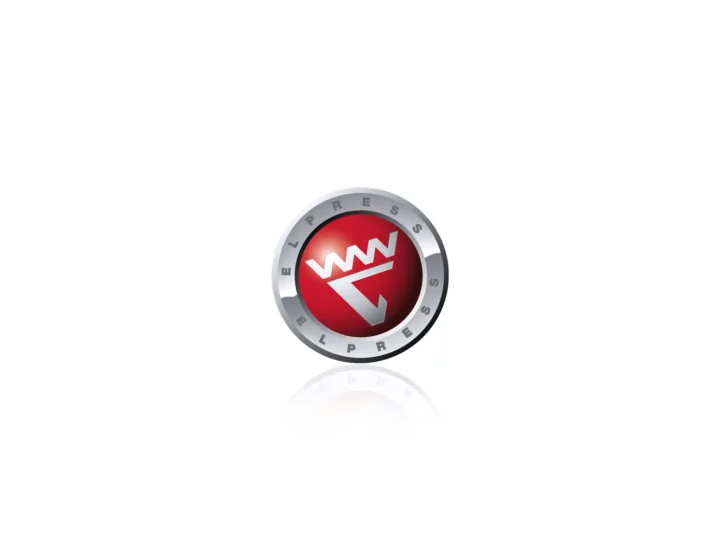

Crimp Quality Assurance & Statistical Process Control Elpress Analyzer Software
Statistical Process Control
Basic SPC theory What is Statistical Process Control? Control methods: Target value control Tolerance value control C mk > Machine Capability Index C pk > Process Capability Index Standard deviation, σ Six sigma > Normal distribution chart
Elpress Analyzer – SPC tool A target value control by use of the EC value The target value is determined as the mean value of 30 crimp characteristics The value of the EC number is the target value for each crimp process Minimizing errors: Capability of machine and process Calibrated system Education of operator High machine capability index, C mk The process capability, C pk , is influenced by the tool, terminal and conductor
Setup register
Setup register Import of a unique setup The setup is a The EC ‐ number tested is the numerical combination of value dies, terminal representing the and conductor. unique crimp combination.
Analyze of crimps Crimping work definition: Crimping force x crimping distance, for a certain previous crimp combination ‐ Hydraulic pressure prop. force. ‐ Force prop. material cross section + hardness. M ‐ Motor torque prop. pressure. n ‐ Motor speed prop. motor torque. DC motor characteristics ‐ Hydraulic flow prop. motor speed. ‐ Crimp time prop. flow. EC number: ”The numerical mean value of area from the pressure ‐ time graph for an amount of crimp data based on a tested crimp combination reduced with the area coming from a calibration crimp cycle is named EC, crimp work or energy.”
Analyze of crimps How is the crimp monitored? ‐ The control system logs the hydraulic pressure with a frequency of 20 Hz. ‐ The measurement starts at 15 bar. What can be analyzed? ‐ Variation of process ‐ Cross section variations ‐ Hardness of material ‐ Crimp component combinations
Control chart The control chart consists of the following: Measurements of crimp characteristics taken from the crimp process at different times. A target line, the EC ‐ value for each unique setup. Upper and lower control limits calculated from the standard deviation of the process. Target line
Control chart Upper control limit EC value Lower control limit
Example Tensile strength test demand of 5500 N Customer demand C pk value: 1,67 Test method: Tensile test Lower control limit: 5500 N Tensile test result > Customer example
The System – Quality assurance The Crimping System The Analyzer Software A High Quality Solution
Introduction to the software
Software - main properties Enables statistical analyze of the crimping process. Each crimp is monitored by the control system. Each crimp characteristics are saved. Each crimp is given a unique identification number in the database. Equipment calibration by export and import of crimp files. Possibility to print different reports.
Software – work process Registration of pump. Graph/chart window: Start window: From this window Study/print crimp graphs, import and save crimps from the study/print control chart pump unit into the database. The database: From this window name a batch, connect a crimp/batch to a setup, make selections of crimps/batches, analyze crimps/batches, import/export files. Print of press report
The crimp graph
Printing of press report
Export/import of crimp
Recommend
More recommend